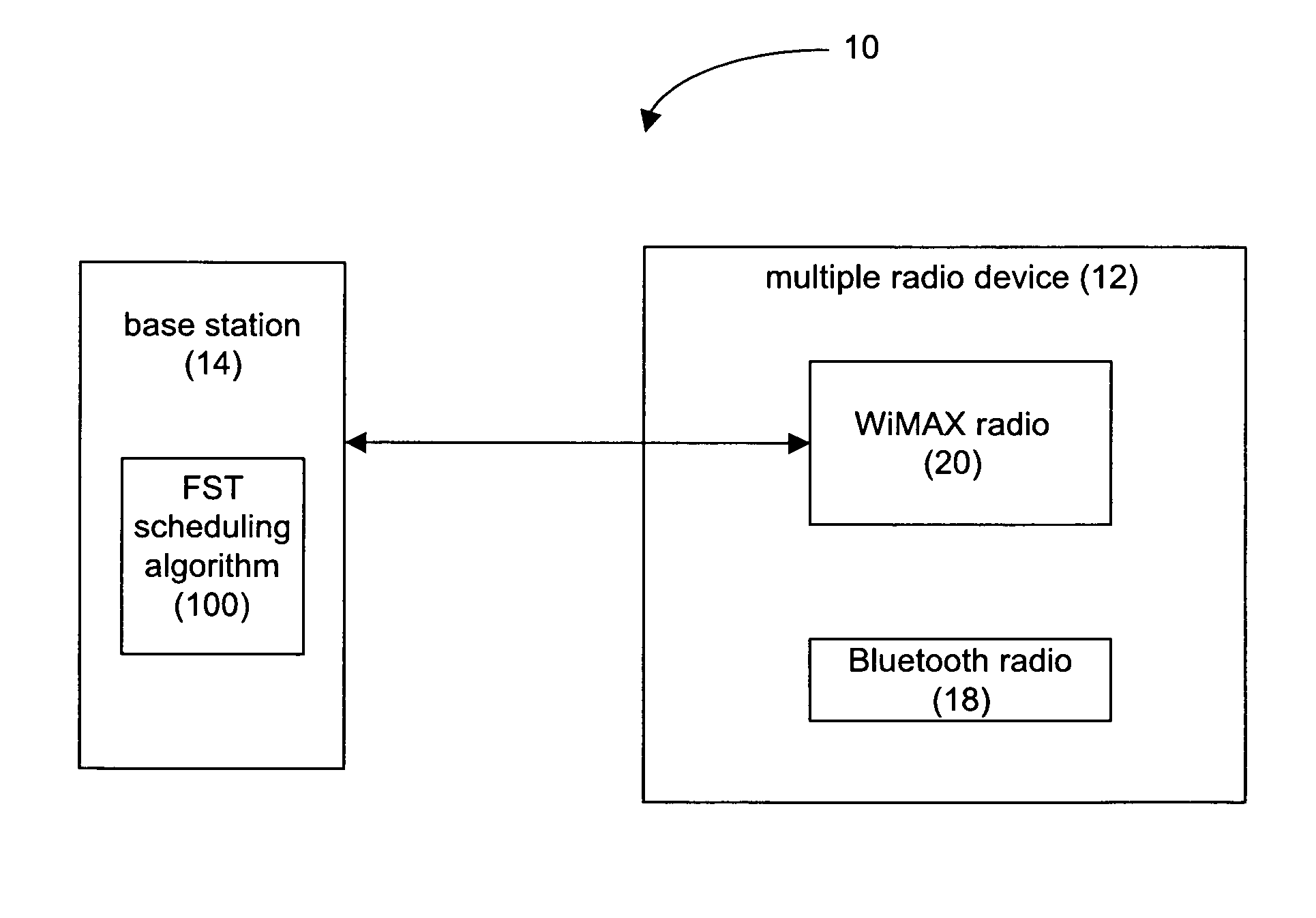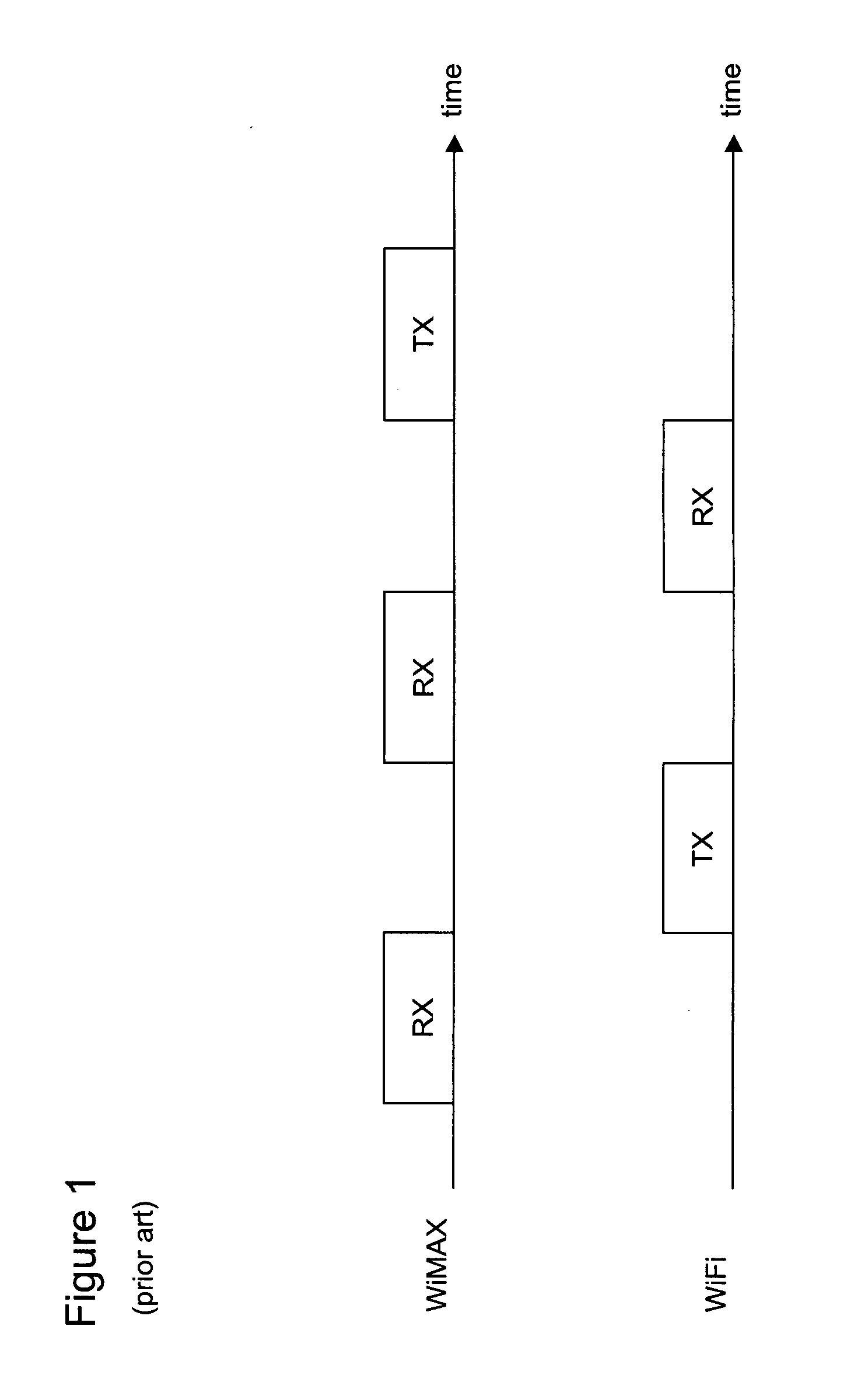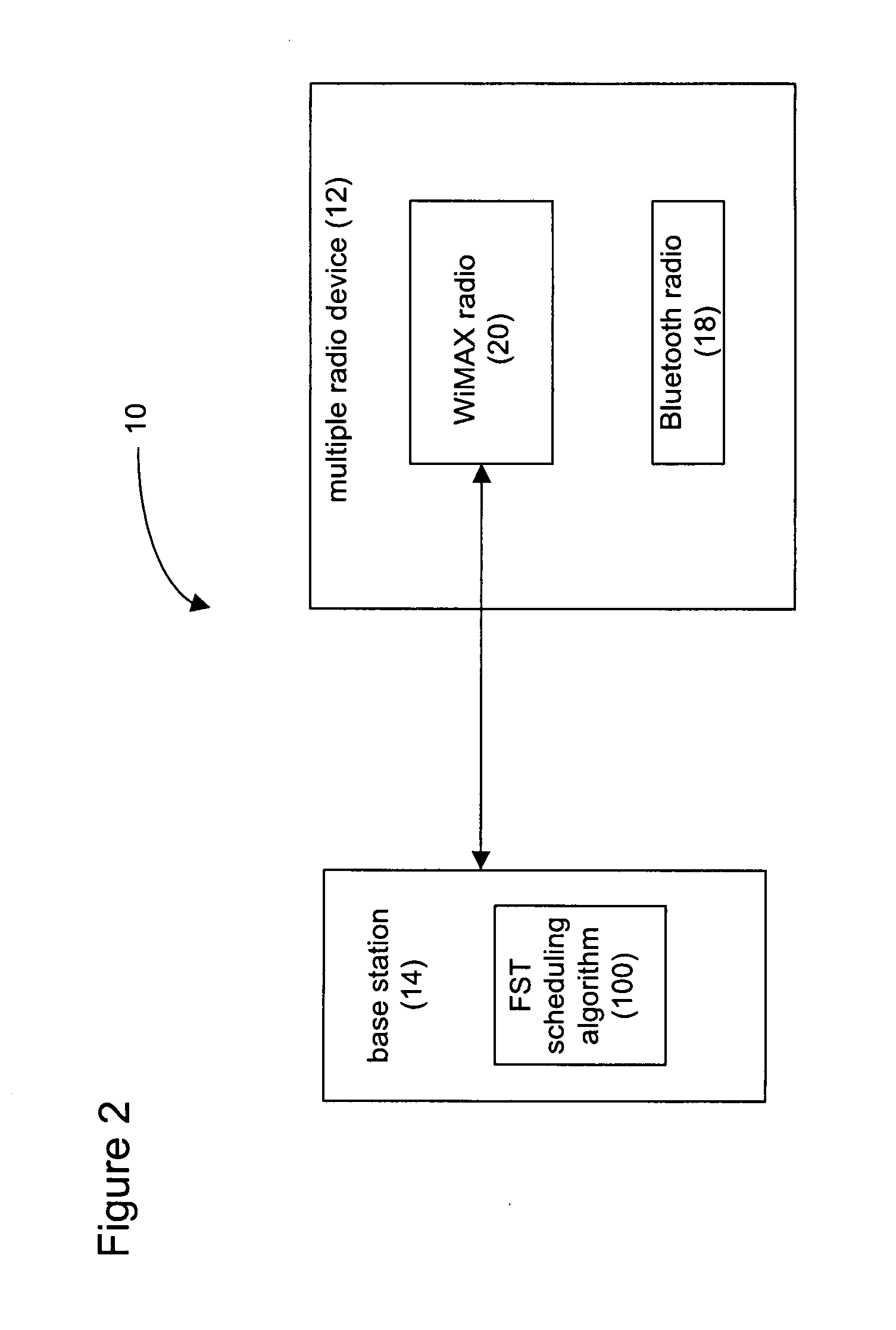Flexible starting time scheduling algorithm for bitmap coexistence protection
a bitmap and coexistence protection technology, applied in the field of multi-radio devices, can solve the problems of slowness, interference or hardware resource conflicts, and difficulty in simultaneous operation of multiple radios collocated on the same physical devi
- Summary
- Abstract
- Description
- Claims
- Application Information
AI Technical Summary
Benefits of technology
Problems solved by technology
Method used
Image
Examples
Embodiment Construction
[0013]In U.S. patent application Ser. No. 11 / 845,004, entitled, “TECHNIQUES FOR COEXISTENCE-AWARE RESOURCE ALLOCATION IN WIRELESS NETWORKS”, a coexistence bitmap protection (CBP) method is proposed (hereinafter, “CBP method”). In the CBP method, a multi-radio user terminal feeds back a time-domain interference pattern, in which “bad” slots that are not suitable for resource allocation due to conflict in time-sharing coexistence operations are marked. In accordance with the embodiments described herein, a flexible start time (FST) scheduling algorithm operable at a base station is disclosed, to allocate resource in the time domain based on the CBP feedback gathered from multi-radio user terminals. The algorithm analyzes traffic load distribution in the wireless neighborhood and determines an optimum starting time of the CBP operation for the current user.
[0014]FIG. 2 is a block diagram of a wireless neighborhood 10, including a base station 14 and a multiple radio device (MRD) 12, wh...
PUM
 Login to View More
Login to View More Abstract
Description
Claims
Application Information
 Login to View More
Login to View More - R&D
- Intellectual Property
- Life Sciences
- Materials
- Tech Scout
- Unparalleled Data Quality
- Higher Quality Content
- 60% Fewer Hallucinations
Browse by: Latest US Patents, China's latest patents, Technical Efficacy Thesaurus, Application Domain, Technology Topic, Popular Technical Reports.
© 2025 PatSnap. All rights reserved.Legal|Privacy policy|Modern Slavery Act Transparency Statement|Sitemap|About US| Contact US: help@patsnap.com



